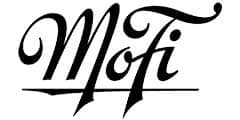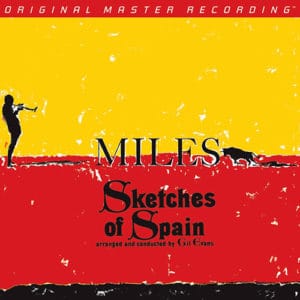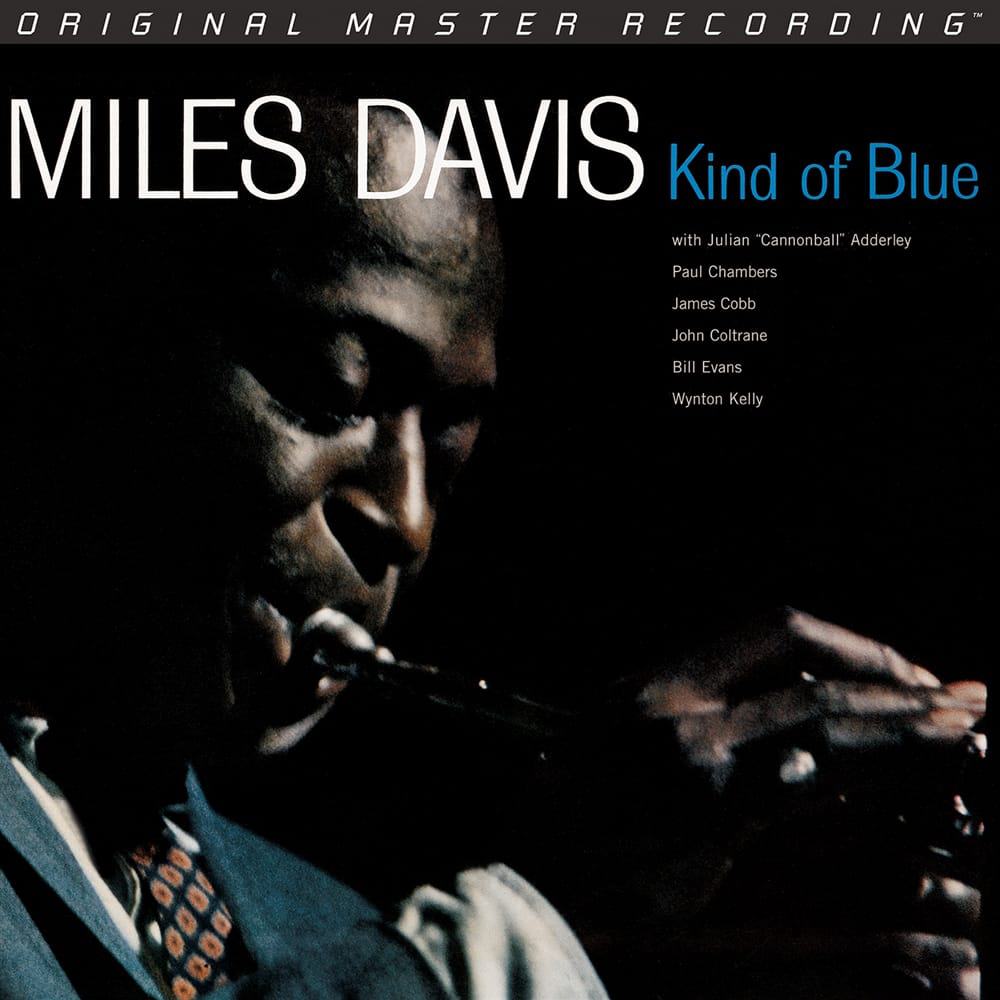Marketplace
2012 Mobile-Fidelity Sound Lab PRESSING
- Catalog Number MFSL 1-375
- Release Year 2012
- Vinyl Mastering Engineer Krieg Wunderlich and Shawn Britton
- Pressing Weight 180g
- Vinyl Color No
- Jacket Style Single
- 100% Analog Mastering Yes
- Original Release Year 1960
- Original Record Label Columbia
- Original Catalog Number CS 8271
Many jazz composers/musicians have ventured into fusing their fare with classical music. Duke Ellington, Gunther Schuller, Anthony Braxton, and Brad Mehldau all come to mind. But for me, crossing too far over makes for a bit of a hard sell—sometimes tedious and almost always an acquired taste. Yet every rule has its exceptions, and one of the greatest exceptions is Miles Davis’ Sketches of Spain. Throughout the 1950s, Davis collaborated with arranger Gil Evans to create large-band-arranged jazz pieces culminating with their three great albums on the Columbia label: Miles Ahead (1957), Porgy and Bess (1959), and Sketches of Spain (1960).
The trio of records remain as different in conception as night and day, but one commonality relates to how Evans’ arrangements seem integrated with the unique attributes of the special recording venue—Columbia’s famed 30thStreet Studio in Manhattan. The latter is sometimes called a temple of sound as it was both one of the all-time finest-sounding recording venues and a converted church. One big room filled with wood and 100-foot ceilings, it in certain ways recalled Rudy Van Gelder’s Englewood Cliffs studio. Davis, Billie Holiday, Simon & Garfunkel, and Bob Dylan recorded legendary performances at 30thStreet Studio before Columbia abandoned it in 1981.
The aforementioned group of Davis-Evans collaborations cover a period of transition from mono to stereo recording. Miles Ahead is all mono; Porgy and Bess was released both ways but sounds superior in mono. But when it came to Sketches of Spain, the studio had stereo nailed, and the stereo release sounds fabulous. Recording engineer Fred Plaut had already proved how sensational Davis could sound in 30thStreet Studio with Kind of Blue. Yet Sketches of Spain more closely resembled an orchestral recording due to the size of the ensemble. With all the balance issues involved with a couple dozen musicians, the challenges were greater and the payoff that much more rewarding. Nothing is lost in the mix. You can pick out all the instruments and place them in time and space.
Sketches of Spain contains five songs culled from the classical repertoire (Joaquin Rodrigo and Manuel de Falla), folk, and flamenco. It opens with “Concierto de Aranjuez,” an excerpt from Rodrigo’s guitar concerto of the same name and closes with “Solea,” a smoking flamenco. With each cut, you think the record can’t get any better, but it does, and the closing tune should leave you limp from emotional exhaustion. It’s akin to having flamenco legends Carmen Amaya or Vicente Escudero stomping on your floorboards, but with Davis and a room full of jazz all-stars leading the charge. The recording towers as one of the best big-band jazz recordings ever made, with the original LP declared decades ago a “super disc” by many an audiophile for its great sound.
Truth be told, until the Mobile Fidelity reissue, I’d placed it a bit lower than super, finding the soundstage somewhat thin. Classic Records reissued Sketches of Spain, as did Mosaic Records as part of a Miles Davis/Gil Evans box set. Neither version rocked my world. By contrast, the Mobile Fidelity pressing checks all the boxes. The soundstage has never sounded so coherent, and it’s absolutely clear the musicians were all in the room at the same time. Dynamic range significantly improves, a huge factor with a record featuring a nice contingent of horns. You can’t watch the horn players lift their instruments to their lips to prepare you for their entrances, and you may find yourself jumping a bit when it happens. Indeed, the sound is so convincing that you’ll some day find yourself wondering why your favorite performance venue never sounded as good as the dearly departed 30thStreet Studio.
Sketches of Spain


 4.5
4.5

